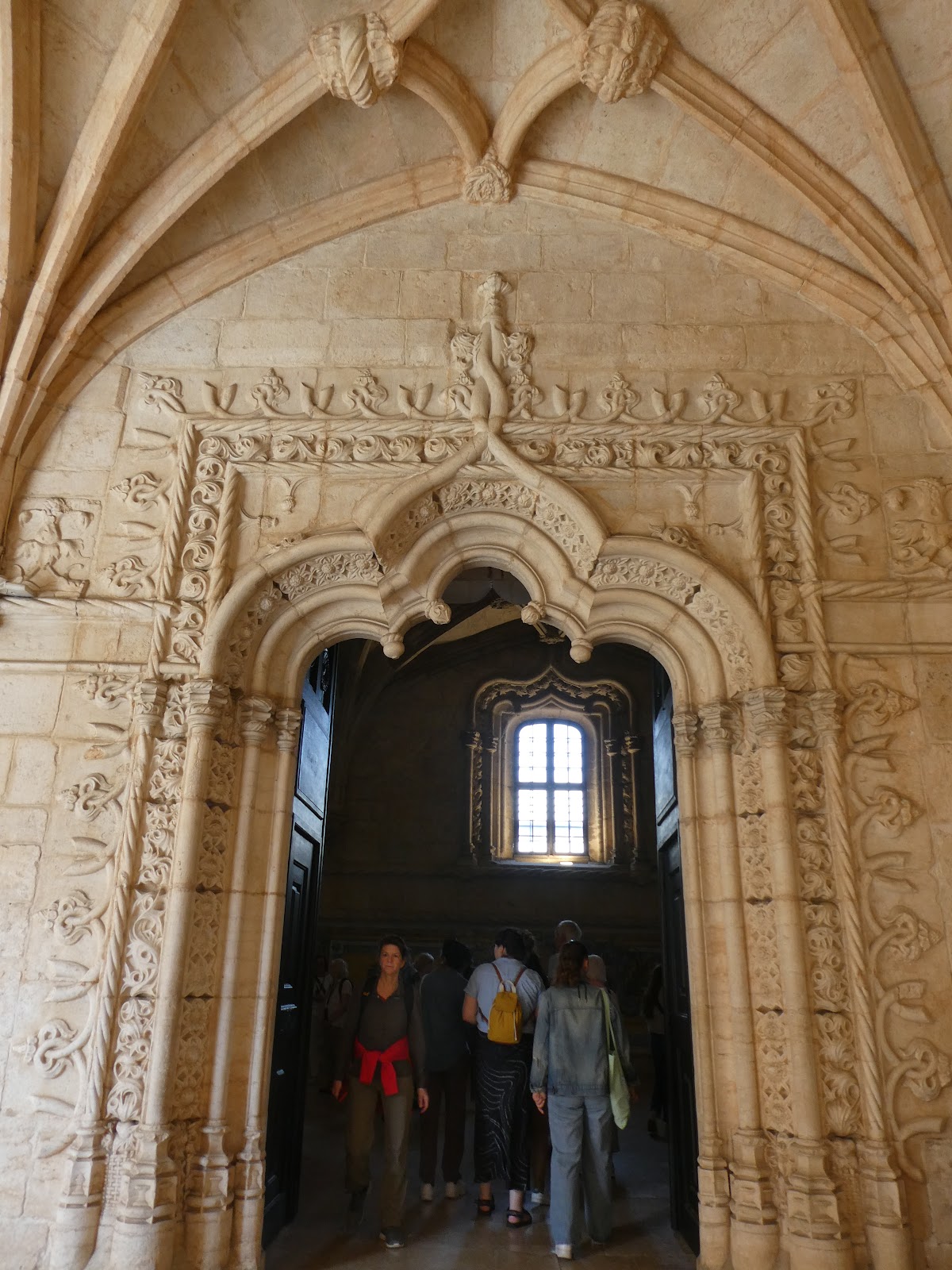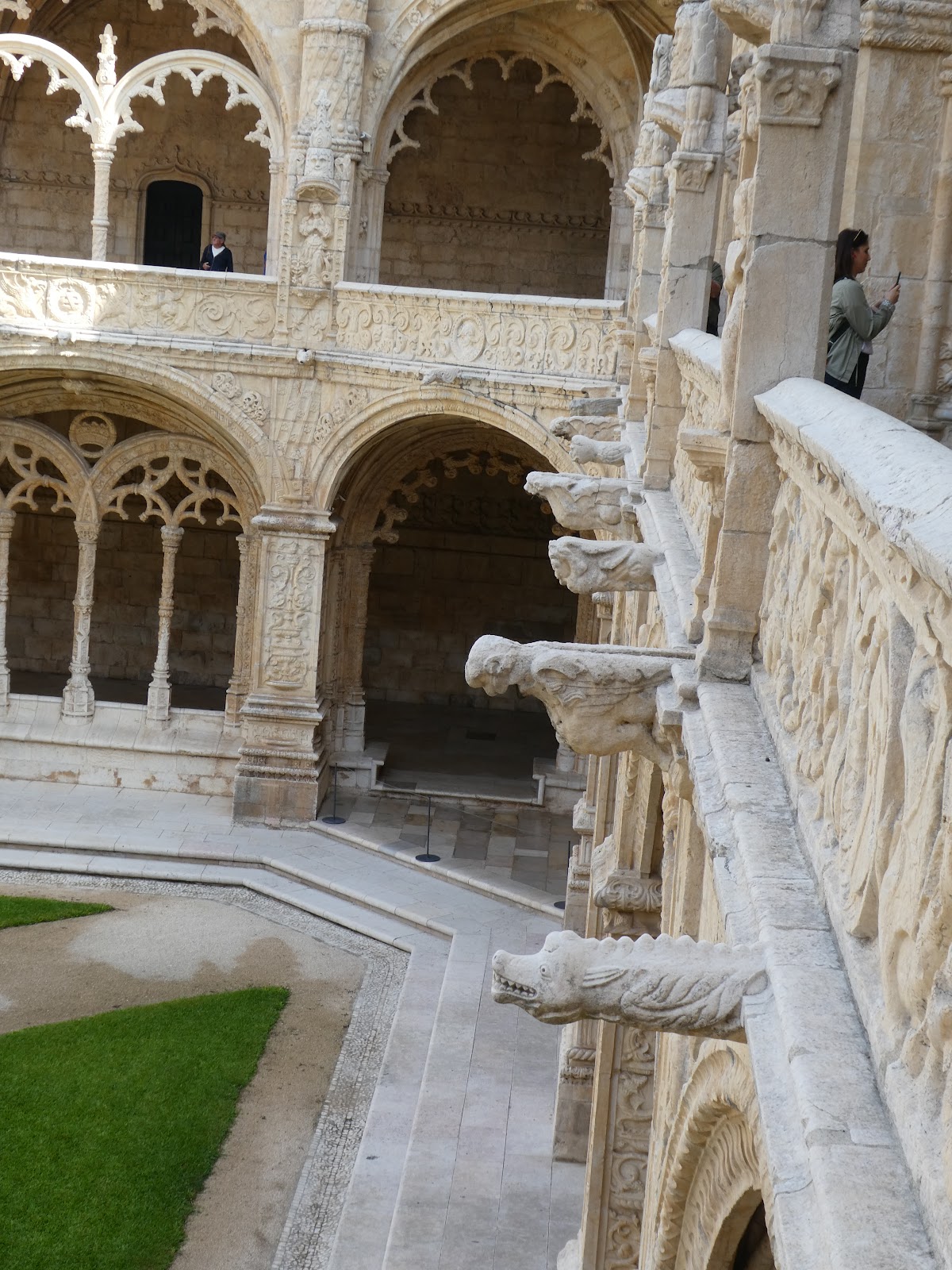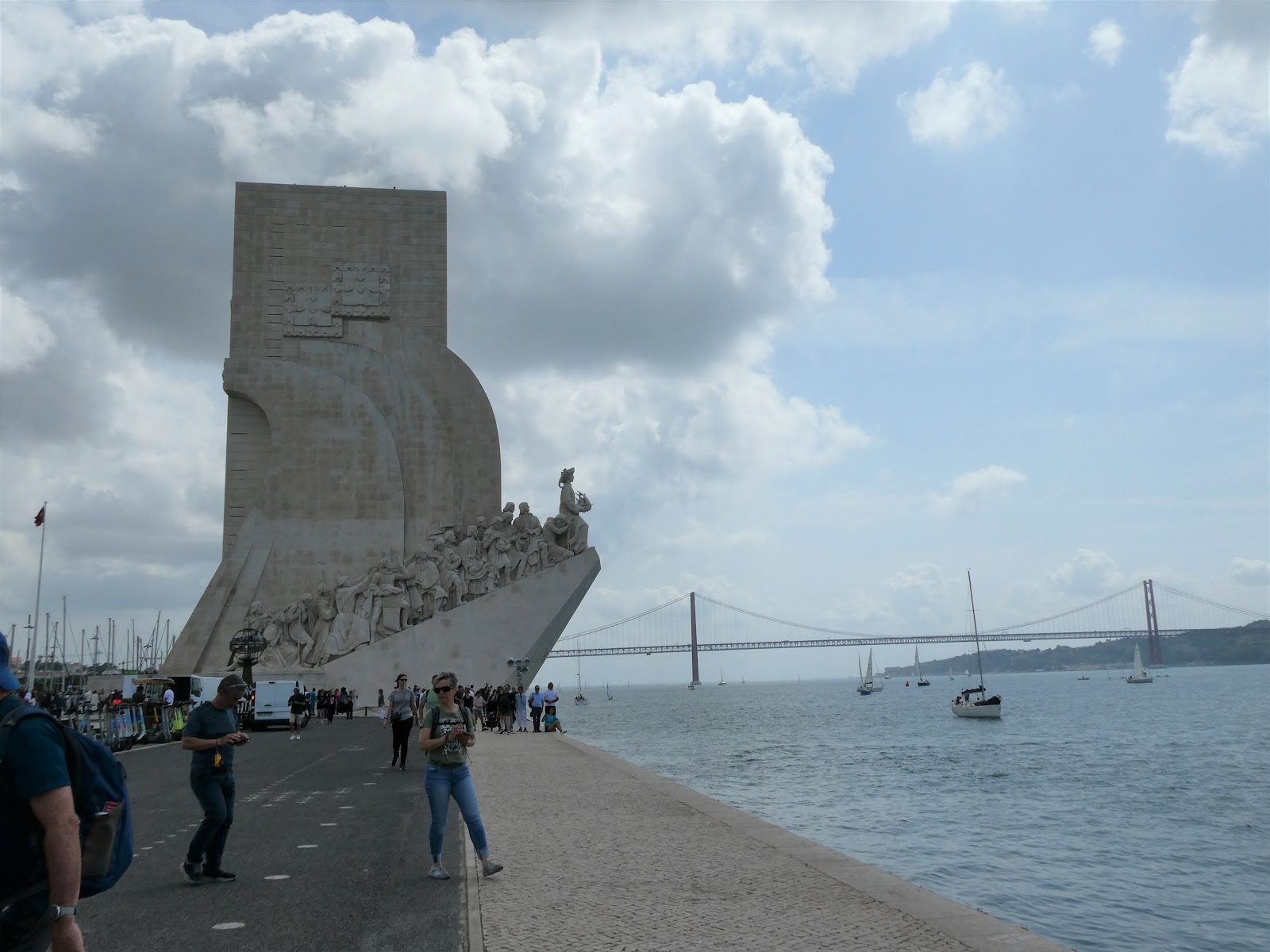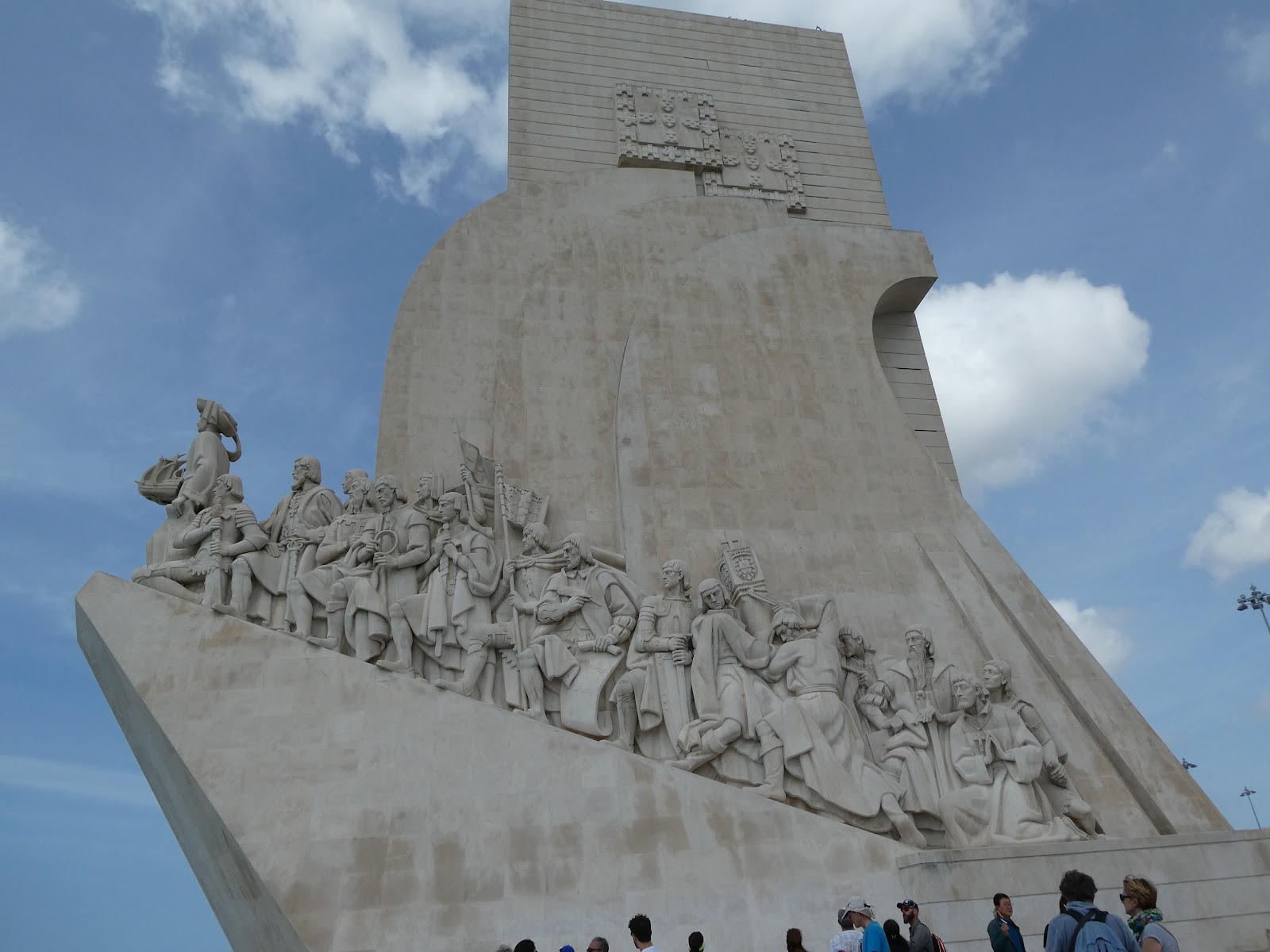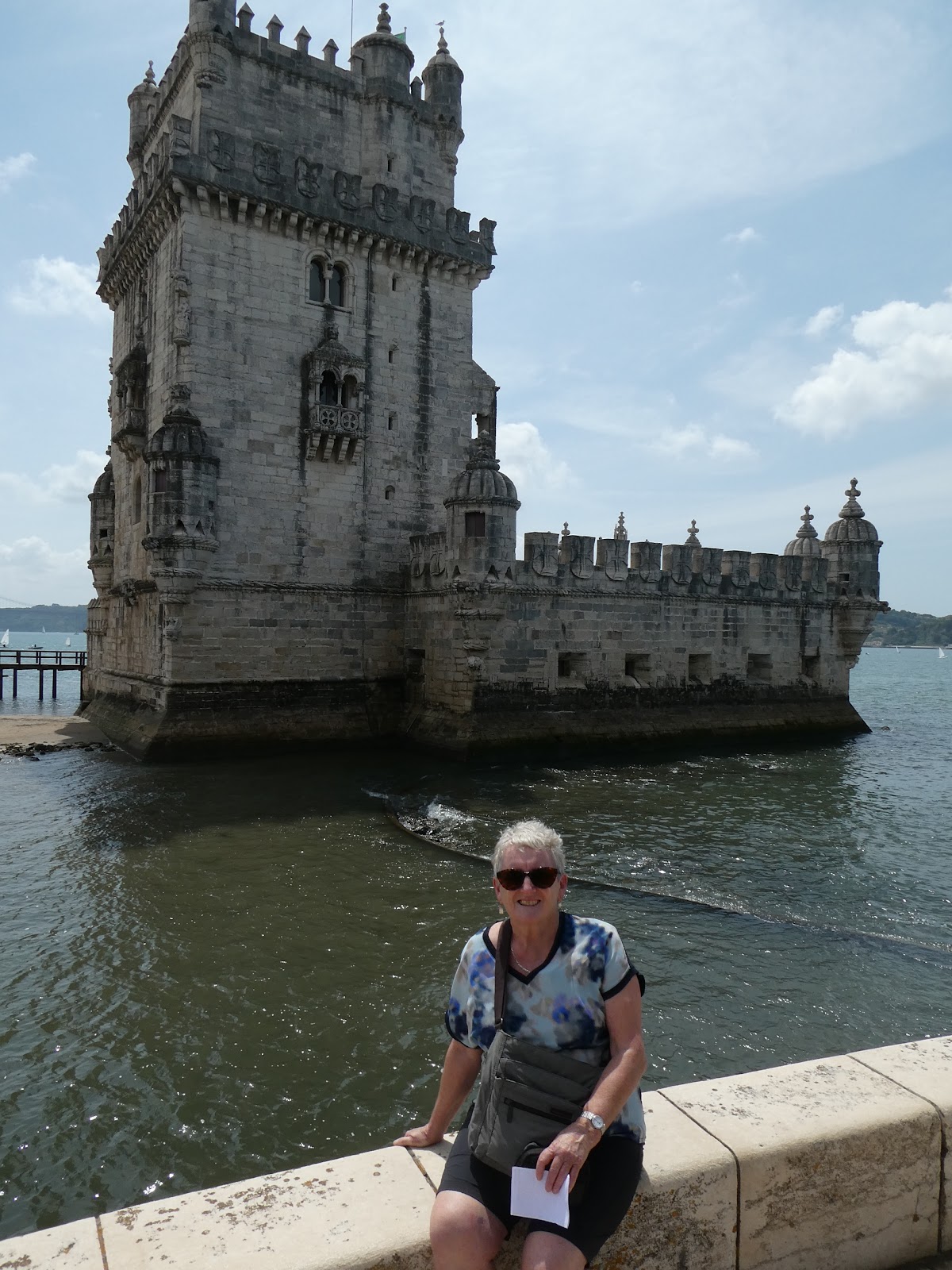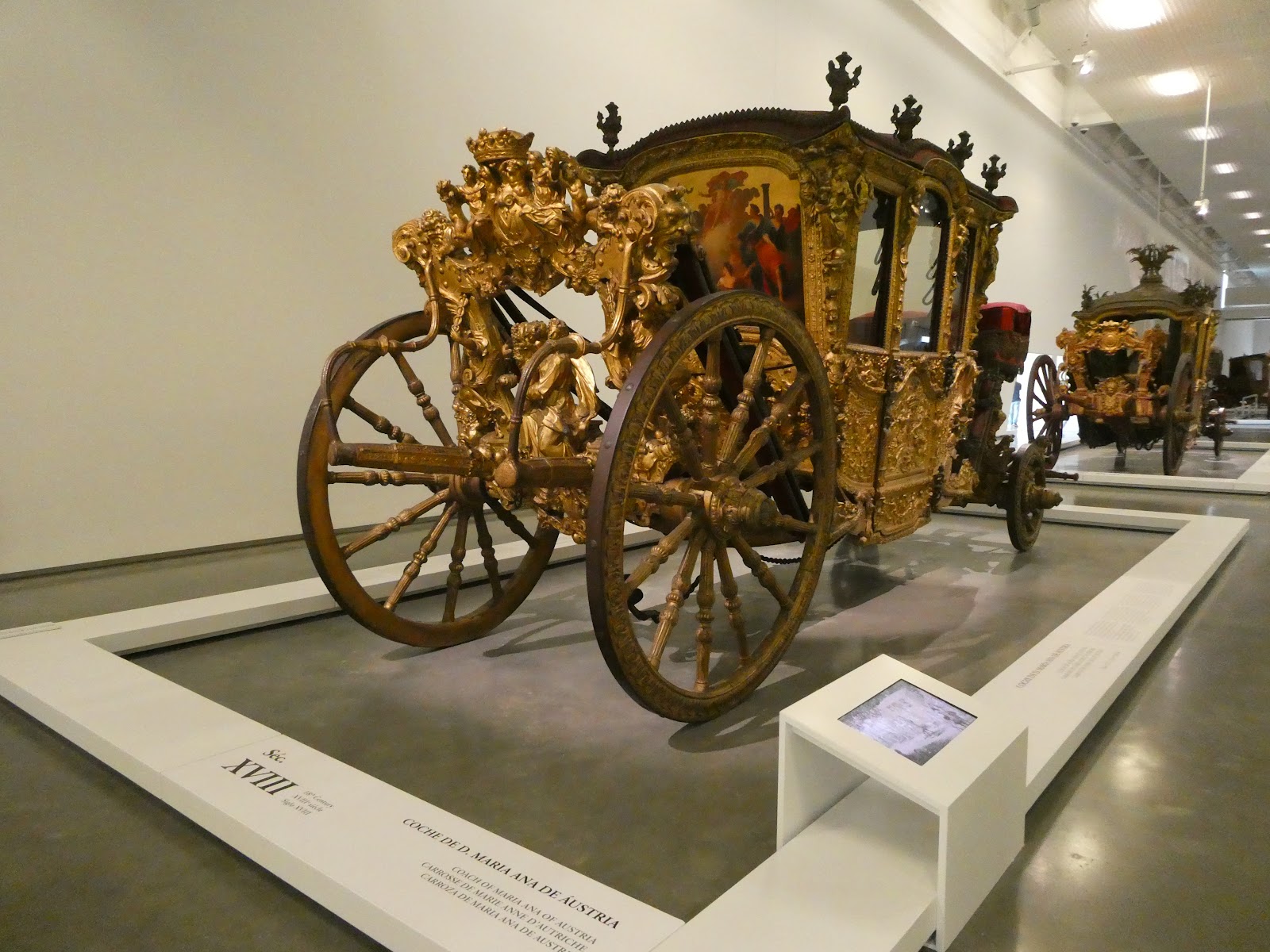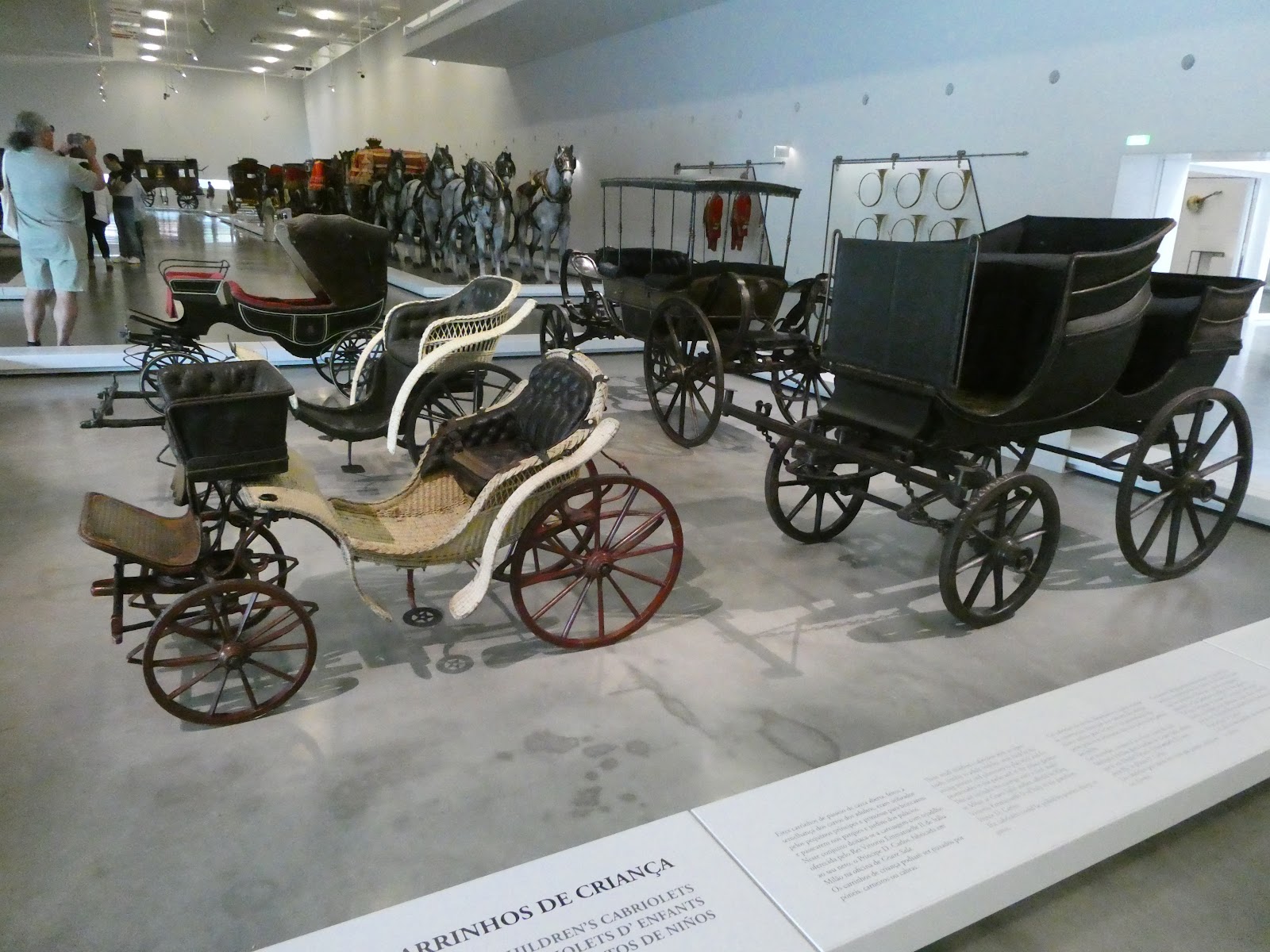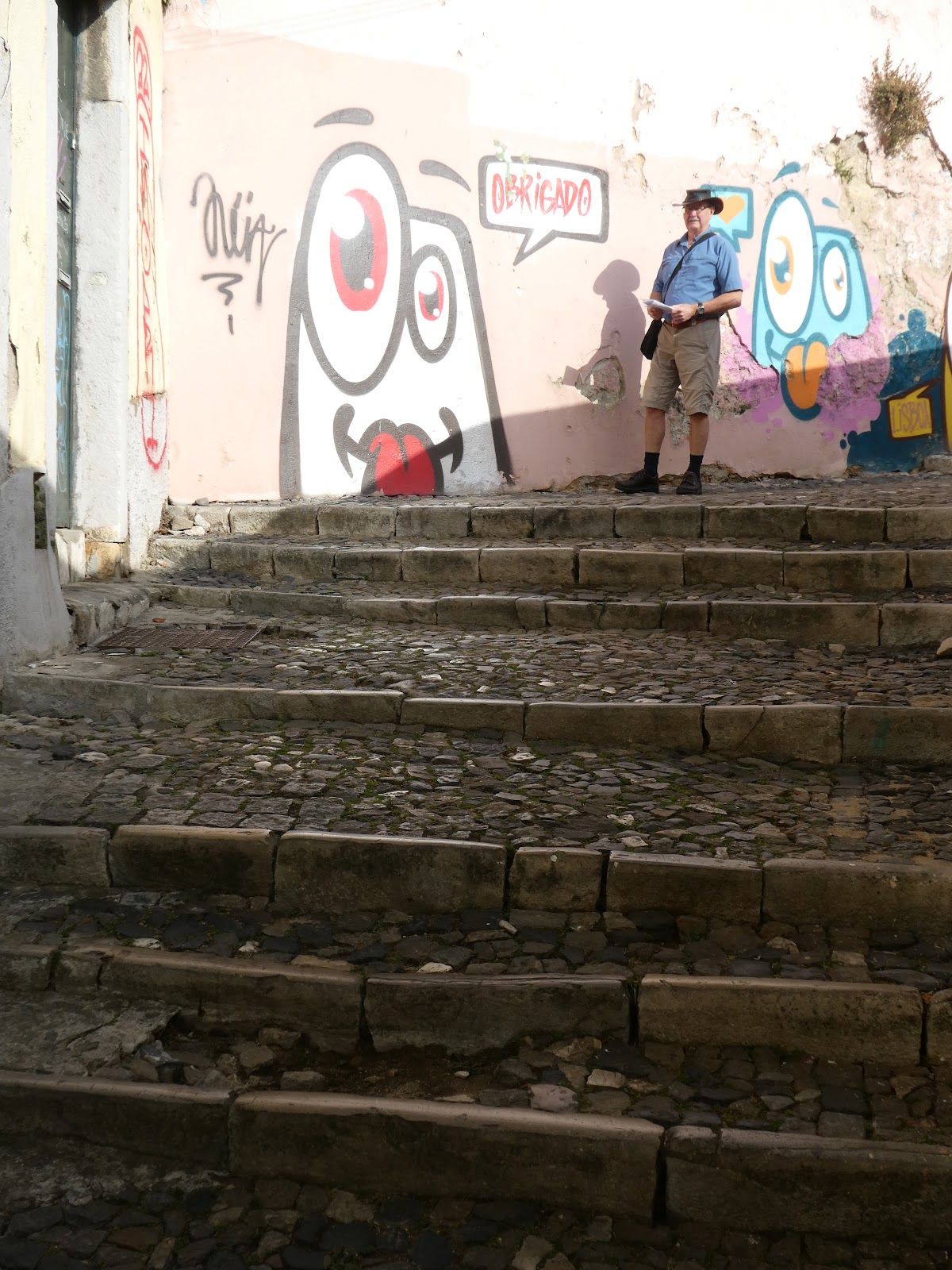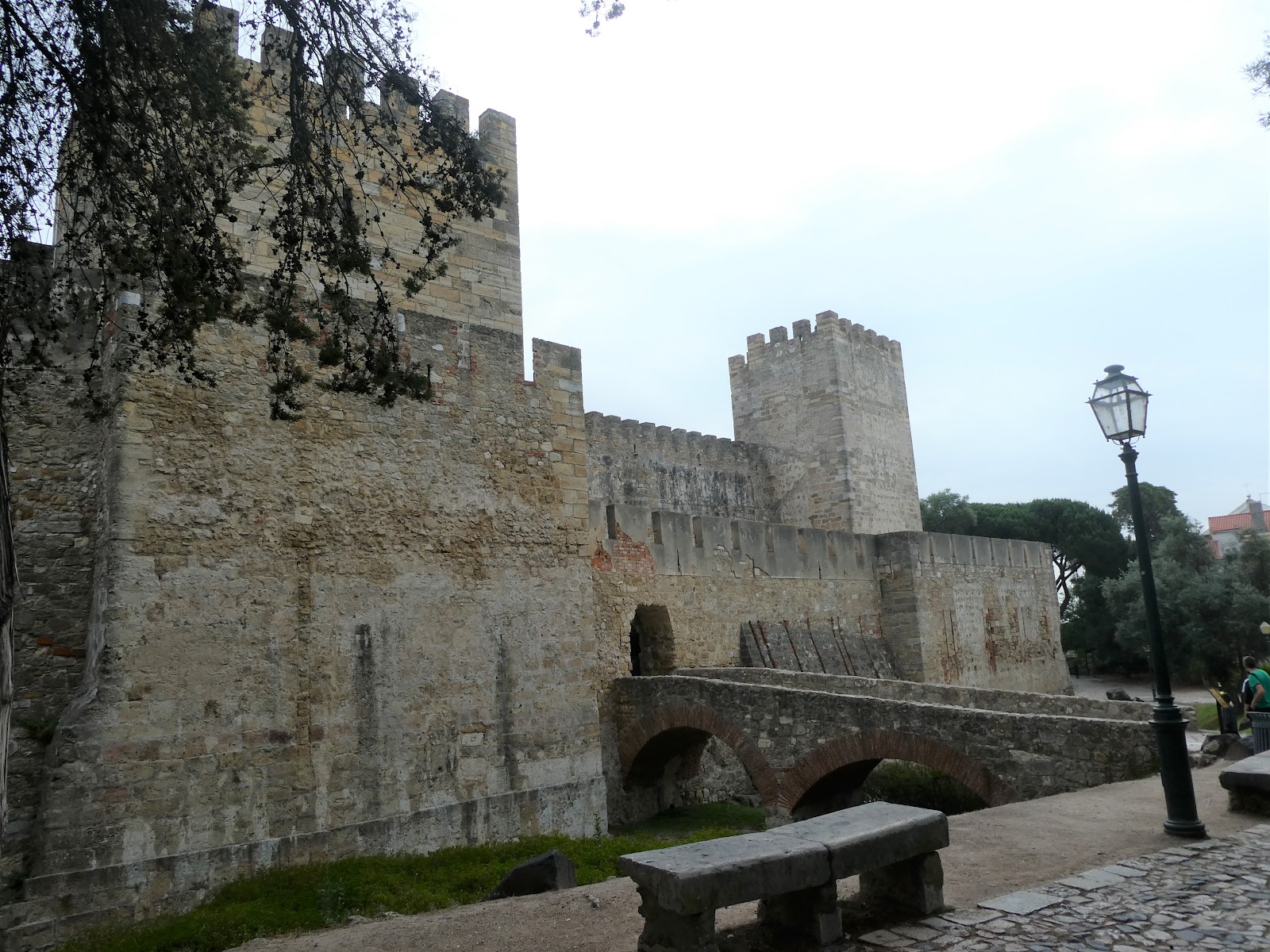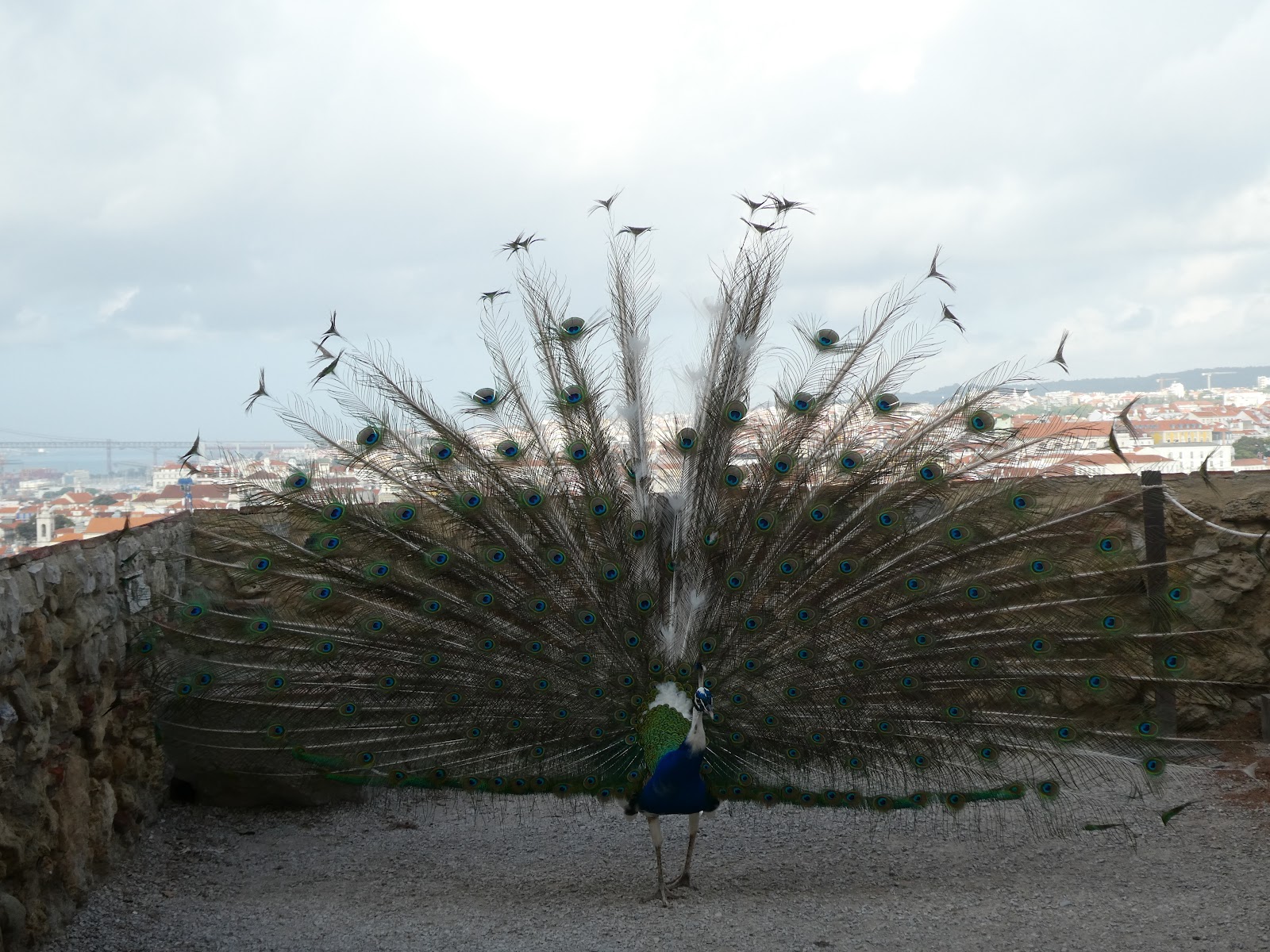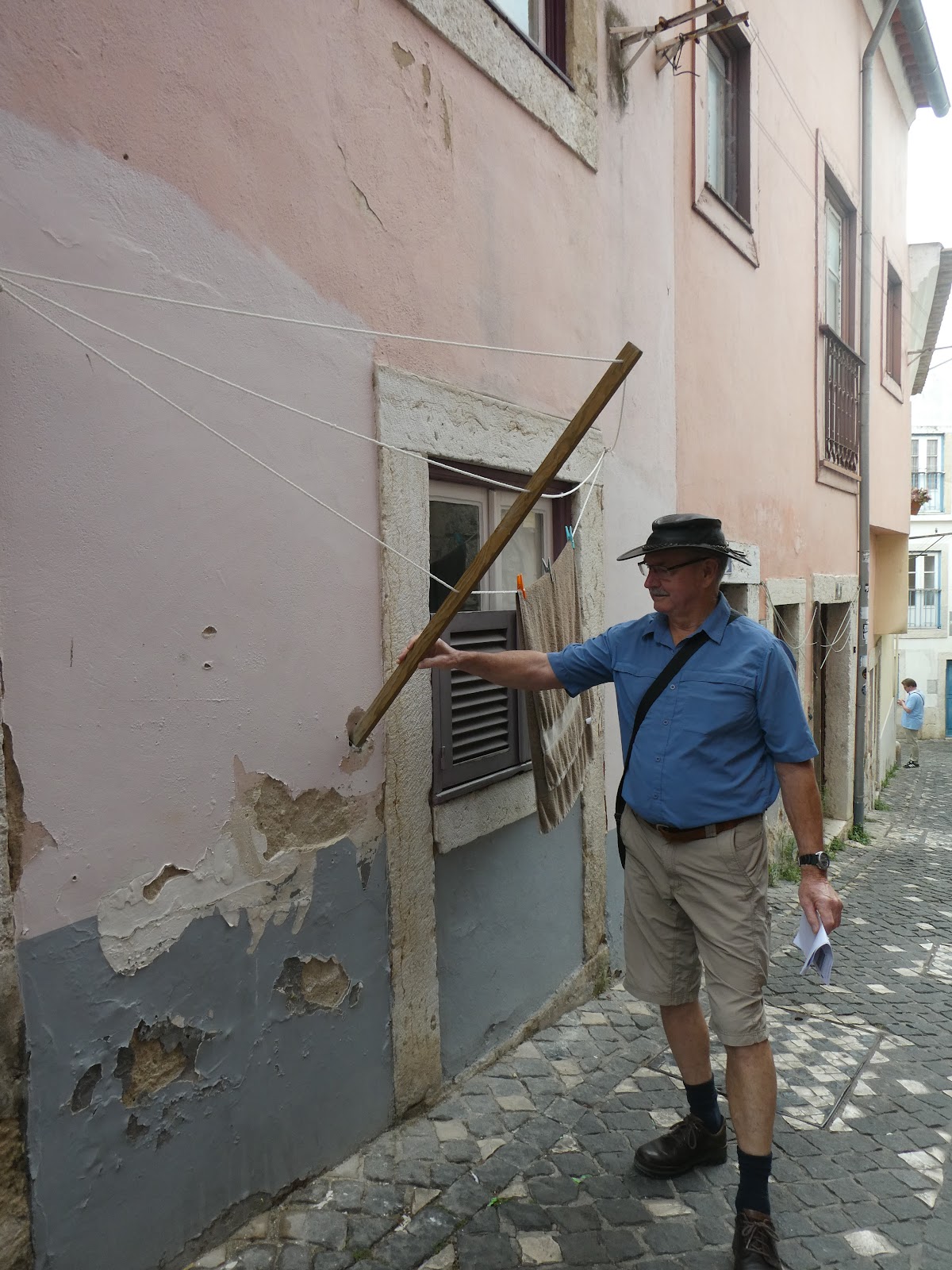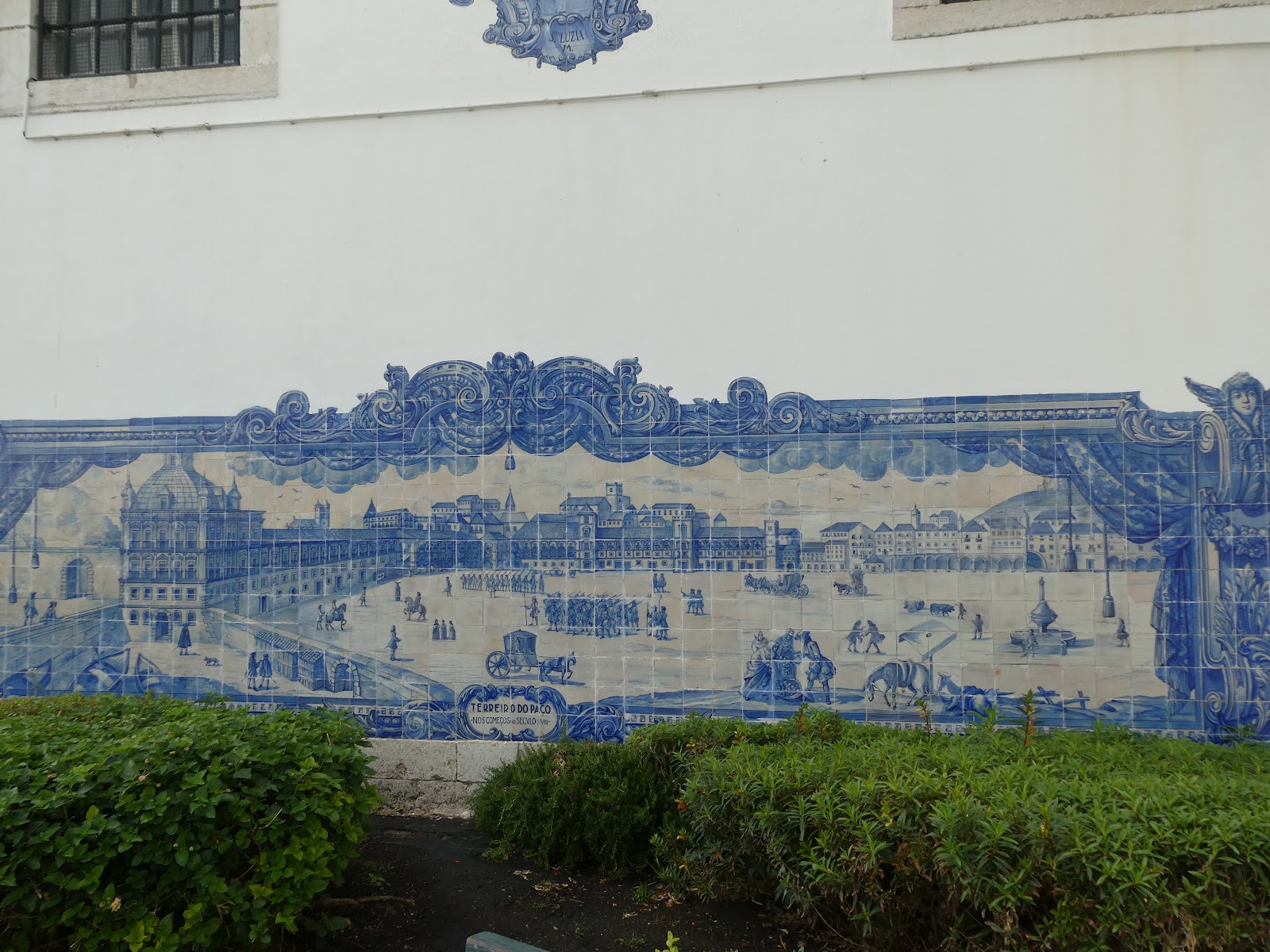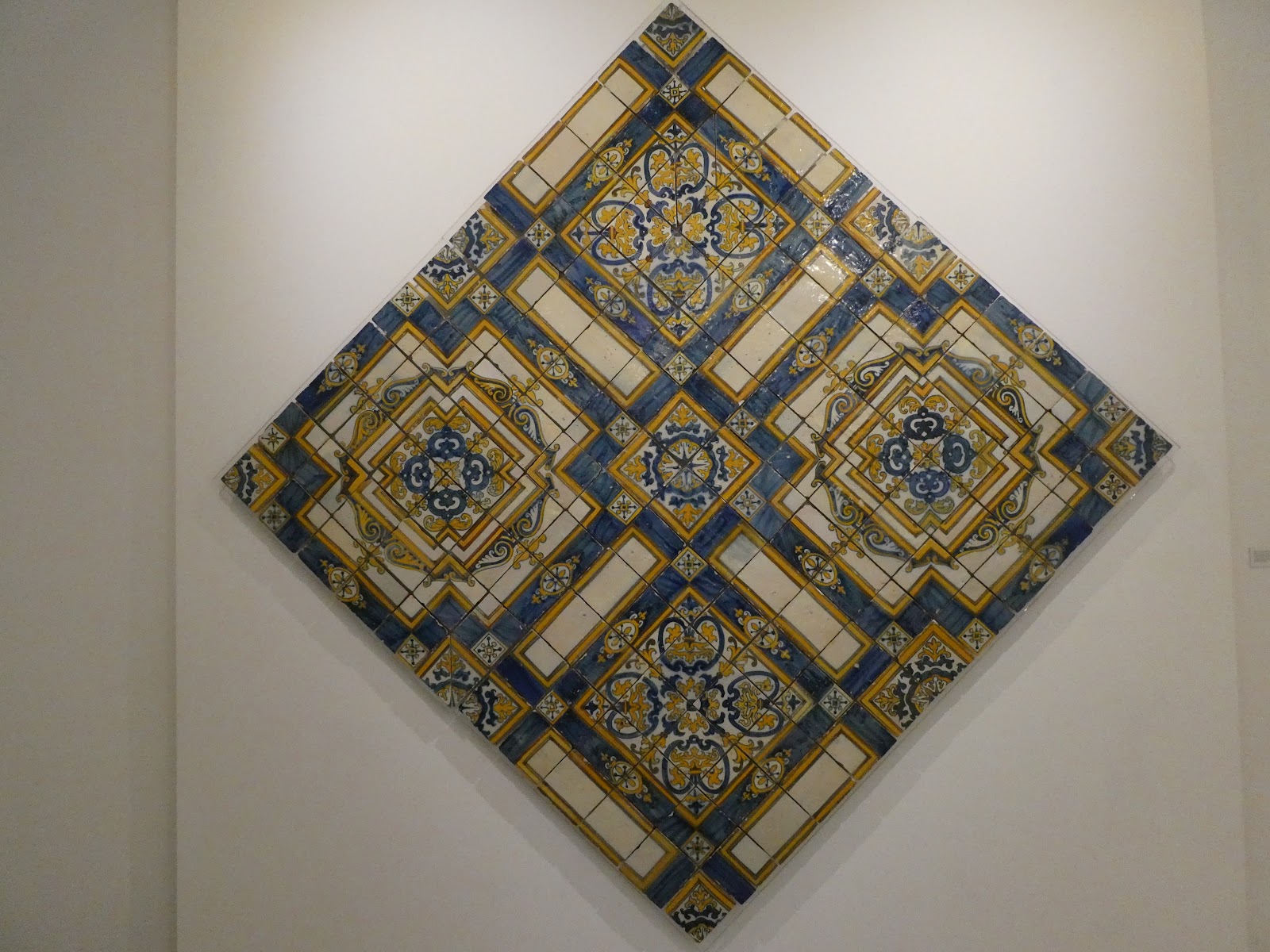Getting away early has been working for us, so same drill for today's activity. Down the hill again to the Rossio Metro station and that quickly took us down to the Cais de Sodre station by the river. We had planned to do the next leg by tram, the recommended option, but the Belem bus came along after about a minute's wait. Never look a gift horse in the mouth, they say. Today we are sightseeing on the Lisbon card, a 22 Euro investment for each of us covering entry to many venues we are exploring and also covering the day's public transport.
We arrived at Belem about 8 00 am, checked the Monastery opening time and then headed off to find breakfast. The first place we came to was the home of Pasteis de Belem, a renowned local tart made from very crisp flaky pastry, custard and with a flambe'd top, so our breakfast was a ham and cheese croissant, a Belem tart, OJ and a coffee. Keep in mind we are doing lots of walking. The tarts were initially made to use up the dearth of egg yolks left after the nuns used the egg whites to stiffen their clothing. After the end of the monasteries in the 1830s Liberation they became a commercial proposition. This shop is the original home of Pasteis de Belem, serving them since 1837. Rick Steve tells us they make about 20,000 a day!
By the time we'd had breakfast and walked back to the Monastery entrance the queue had started, but we were only about 15-20 metres from the gate and had a fairly chatty time for the 25 minute wait. The monastery is a 300 metre long white limestone building, built by King Manueline as a tribute to the discoveries of the early Portuguese explorers. This was also the king who expelled the Jews from Portugal in 1497. It wasn't that he didn't like them, but Spain's Reyes Catolicos, made it a condition of allowing him to marry one of their daughters!! Quite extraordinary really. The monastery has three elements, the church, the cloisters and the domitories which now house the Maritime museum.
We were doing a self-guided (by Rick Steve) tour. We went around the very grand cloisters, then upstairs for the views. The colonnades are very ornate reflecting Manueline architecture, a blending of Gothic and Moorish elements. The sea plays a strong role in ropelike columns, knots, shells, anchors and nets. It's a very ornamental style. The gargoyles are often animals. The massive scale of the monastery is the major takeaway impression here. The pictures tell the story.
The rectory, which fed the hundreds of monks, was beautifully decorated with azulejos depicting biblical scenes and themes, including the feeding of the 5000, the miracle of the loaves and fishes.
Mass was happening in the Church so we had to put our visit to that a little later in the day.
Next port of call was the Maritime Museum, the highlight of the day for me. The Portuguese were intrepid explorers, encouraged by King Manueline. I can recall learning about Ferdinand Magellan, Vasco de Gama and others at school. A huge world (as it was) map dominates the entry, celebrating all of the early Portuguese voyages of exploration and some would probably say exploitation.
The animated depiction below of Vasco De Gama's voyages looks exactly like the map I drew to illustate my research on him in Social Studies 1961.
Not so much about Ferdinand Magellan, who set up the first circumnavigation of the globe, but didnt personally complete the voyage after being killed by a poisoned arrow in a fracas in the Phillipines. Possibly the reason he doesn't feature so much is that the voyage was completed by his Spanish 2ic, who did a fair amount of putting the great man down. I also did a chart of Magellan's world travels in Social Studies 1961, but didn't see someting similar to my efforts today. He is shown on the aforementioned world map in the entrance foyer.
The museum covers all of the early sailing history and the development of more efficient sailing rigs. But all aspects of maritime endeavour were covered, fishing, leisure craft, naval military history including the Battle of Matapan, in which the Christians inflicted a huge defeat on the assembled Moorish fleets and established European dominance on the waves for the first time. There is also a cathedral in Lyon dedicated to and celebrating that victory, I recall from an earlier visit there.
This is a huge exhibition, and the final hall had a collection of royal barges, and a focus on the aircraft involved with the maritime forces in more recent years.
We moved on to the huge monument Padrao dos Descobrimentos (Monument to the Discoveries) overlooking the river. The monument commemorates Infante Dom Henrique ( Henry the Navigator) and 32 of those who were involved in the Portuguese overseas expansion in the Age of Discovery.
Next was the Tower of Belem, built to guard the huge river entrance. We didn't visit and climb for the views. A two hundred metre long queue quickly prompted that decision. but we did view it, admire its elaborate Manueline structure and enjoy a long stroll on the quite windy river promenade.
This is a day with lots of very close venues and we moved on the the Carriage Museum. The display was again just fantastic and documented the development of all sizes and shapes of horse drawn carriages. The first hall focussed on the royal coaches, starting with a relatively rudimentary coach c1600 used by Phillip I, king of Spain and Portugal, in his journeys between Lisbon and Spain. It had very little springing and must have been very uncomfortable, although it did have a potty hole under the seat!
Many of the other coaches were really elaborate reflecting the grandeur of the person or the event, such as a visit to Pope Clements or the signing of a treaty with France. Kind of like one-upmanship!
The second hall saw the technological developments in coaches as they became much more utilitarian.
It was time for lunch, and fortuitously, across the road at the top of the stairs we ascended from the museum was Leitao Da Cidade, a small restaurant famous for its serving of tasty and succulent suckling pig. Has to be the best pork sandwich I've had. And yet again, a couple of those and a coffee, just 14 euros. Put it on your list!
Last port of call was the Church attached to the monastery, quite ornate and befitting the grand scale of this huge commemoration of the Portuguese "Age of Discovery".
Vasco da Gama's tomb was quite fittingly the last part of our day's viewing.
And that is the end of lisbon, tomorrow we head to Sintra






